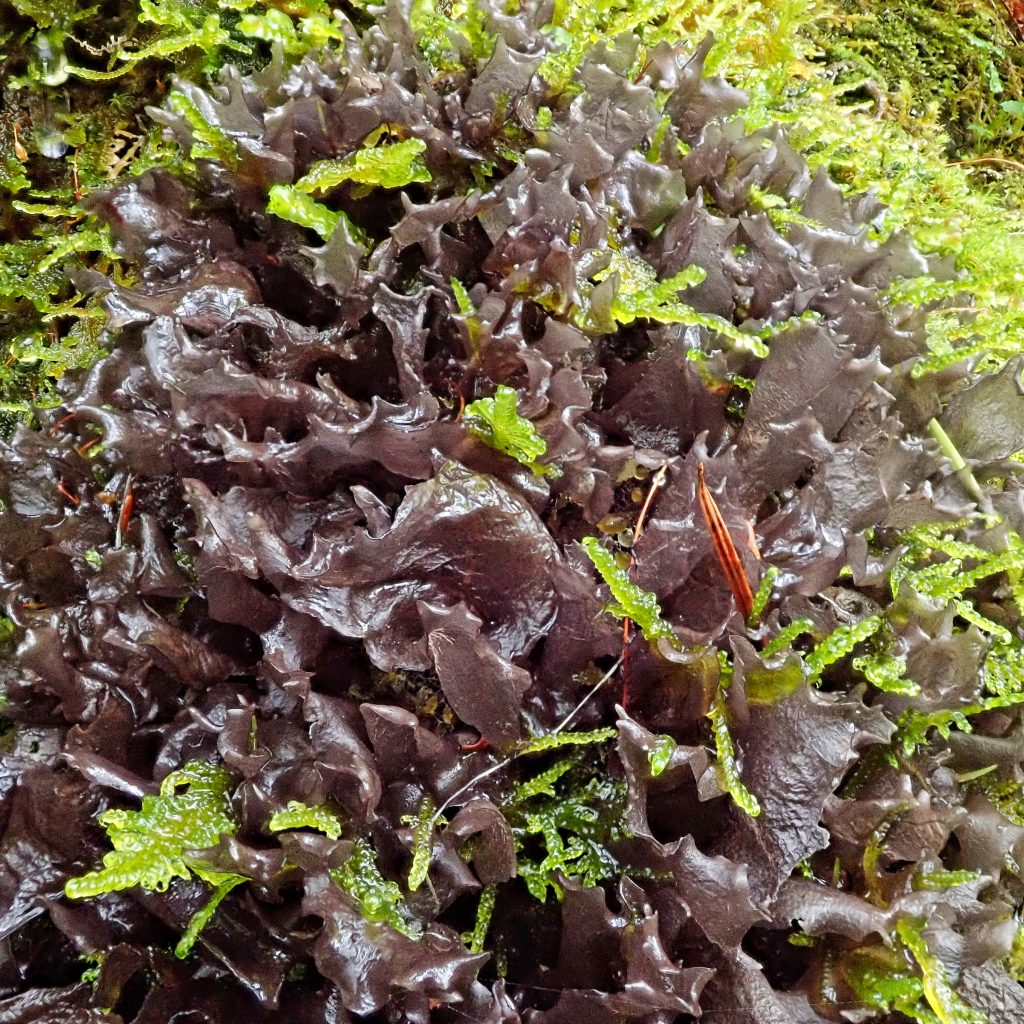
I have seen many patches of dark grey or brown, gelatinous lichens, in my ramblings, but for some reason had never identified any. I think I got scared off a couple years ago, the first time I paged through my brand new copy of ‘Macrolichens of the Pacific Northwest’ (McCune/Geiser) and found over a dozen species of dark Collema and Leptogium that, to my untrained eye, all looked the same.
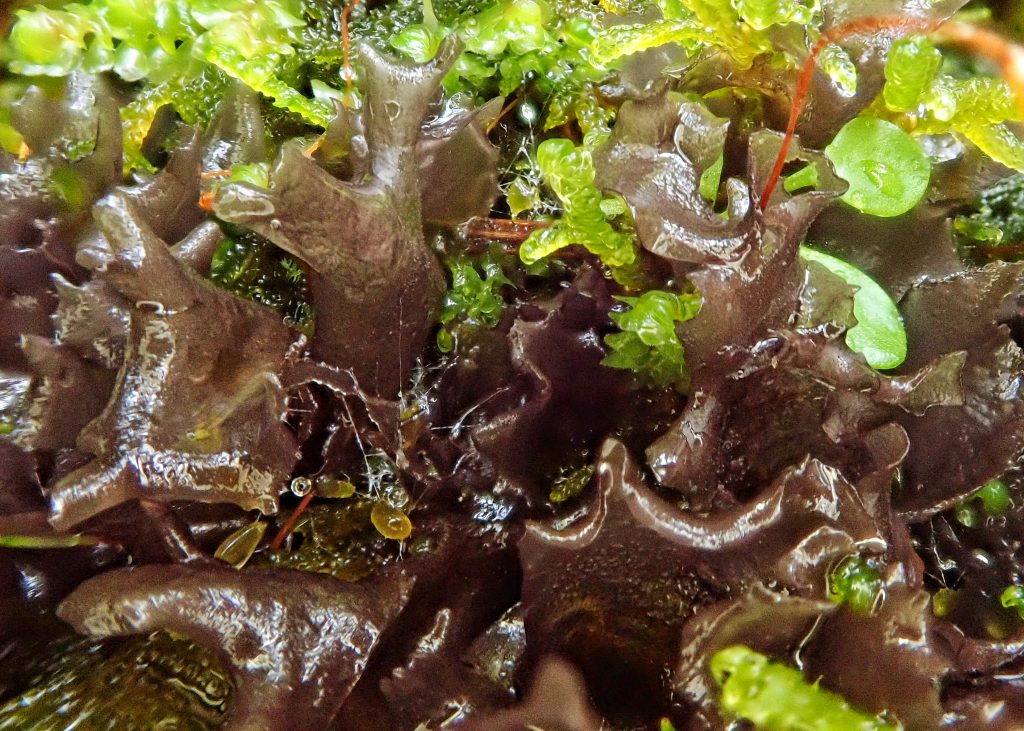
But, because of this project, I made the effort when I found this one on The Cliff, and I got lucky that it was an easy identification. Antlered jellyskin (which almost makes the cut for an accepted common name) is a wonderfully evocative and accurate name for this species, since the aforementioned ‘antlers’, which are actually formed by the inwardly rolled margins of the lobes, are diagnostic to this species. And the thallus certainly looks gelatinous!
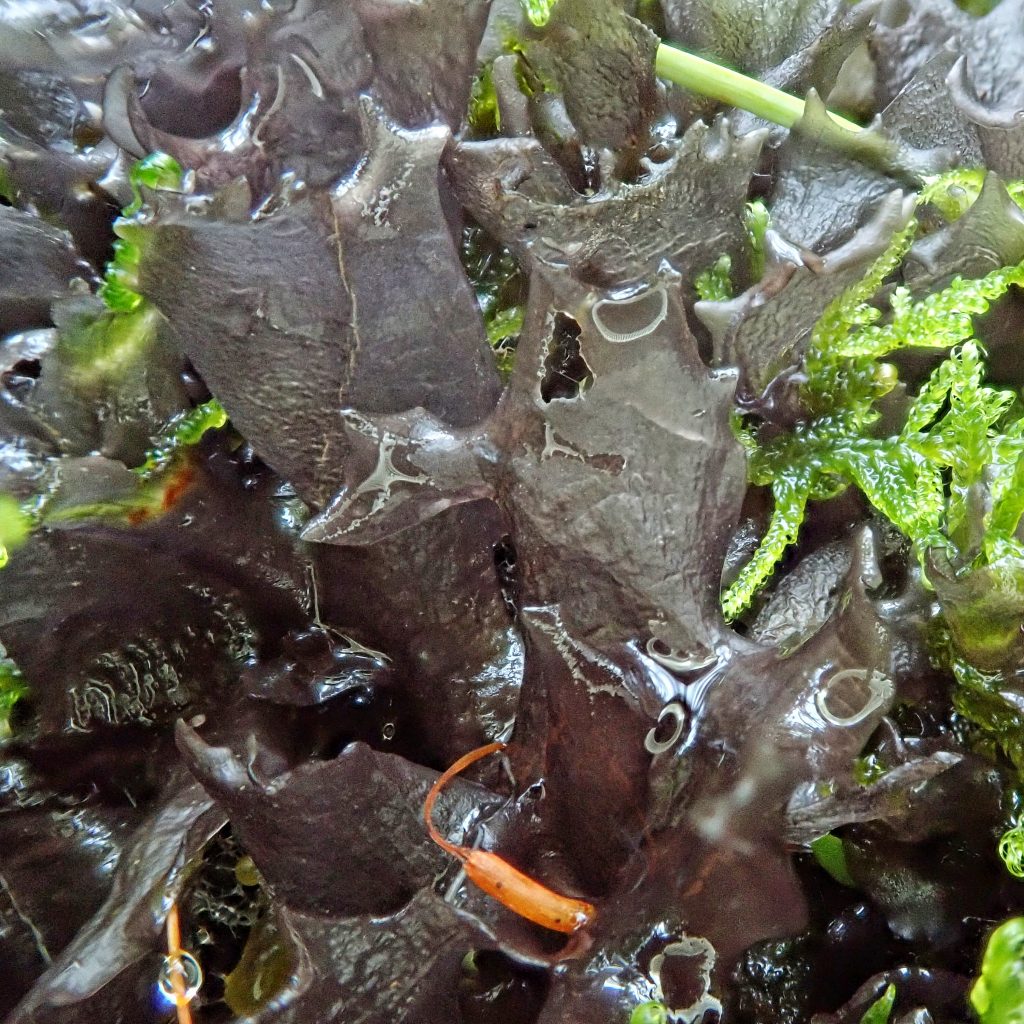
As for the scientific name, a major revision of the family Collemataceae was undertaken based on both morphology and molecular biology, (Jorgensen/Wedin; 2014), and the catchall genera of Collema and Leptogium were circumscribed, and 6 generic names were added. One of those is Scytinium, to which this species (formerly Leptogium palmatum/Leptogium cornicularum) was added.
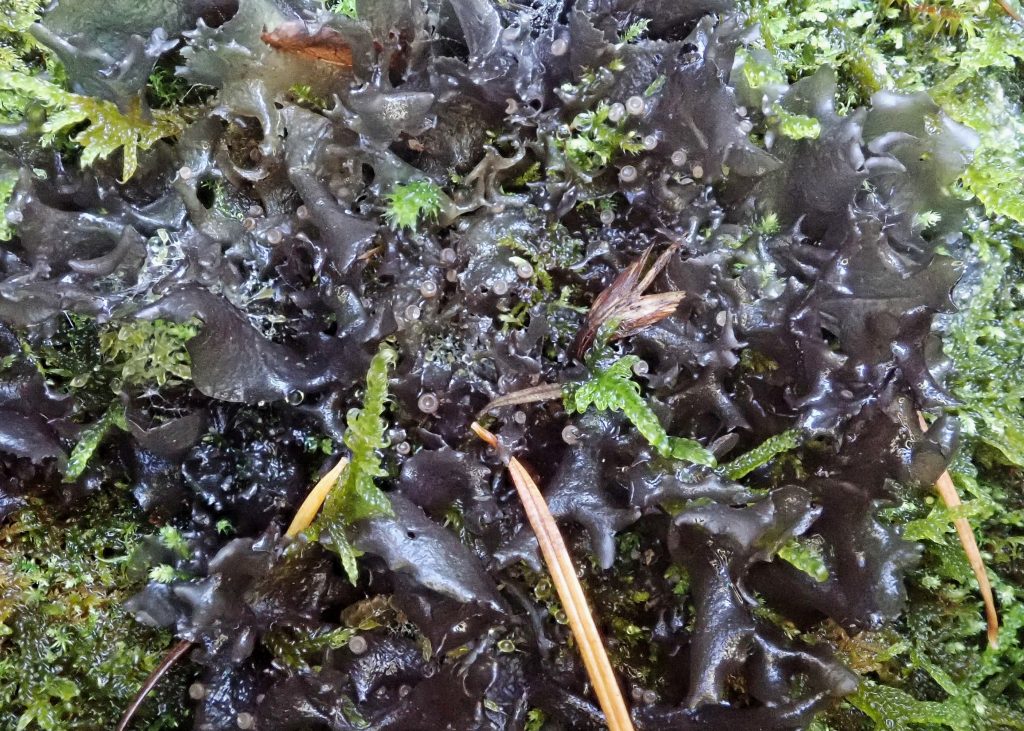
Scytinium palmatum is an important lichen in the revegetation and restoration process on disturbed ground. It has a major impact as both a soil stabilizer and nitrogen fixing agent, and is often one of the pioneers colonizing abused ground. And, especially when it is wet and intermixed with the contrasting, vibrant greens of its usual moss cohorts, it is aesthetically pleasing to look at, striking and even handsome, albeit in a sort of gothic way.
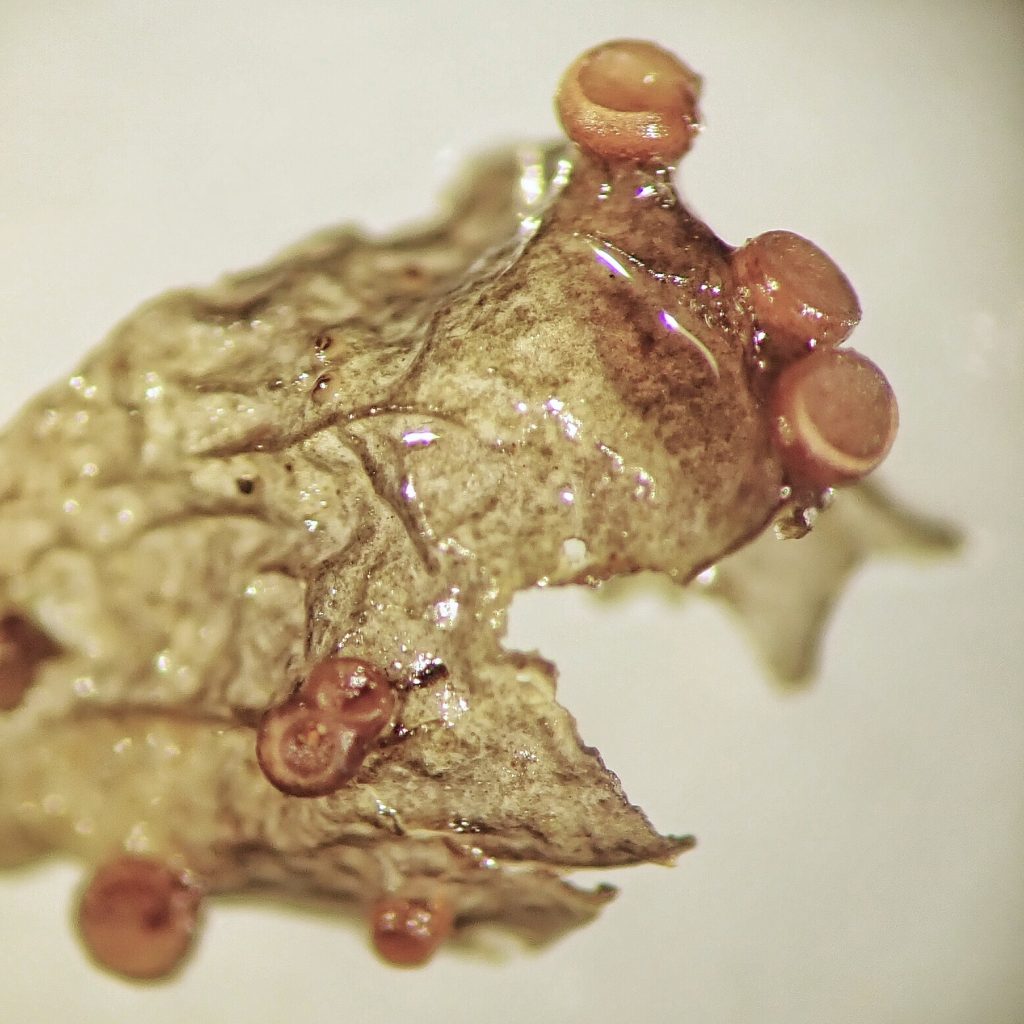
Description-Dark grey to brownish gray (grayer in shadier locations, browner where there is more light), translucent when hydrated; foliose tending to fruticose thallus; margins of lobes and their apices rolled inward (revolute), forming the eponymous antlers; individual specimens up to 6cm in diameter; sometimes forms large mats; often with brownish apothecia; lacks soredia and isidia; photobiont is the cyanobacteria Nostoc.
Similar species– Nothing similar in color and growth form has the rolled margins of the lobes.
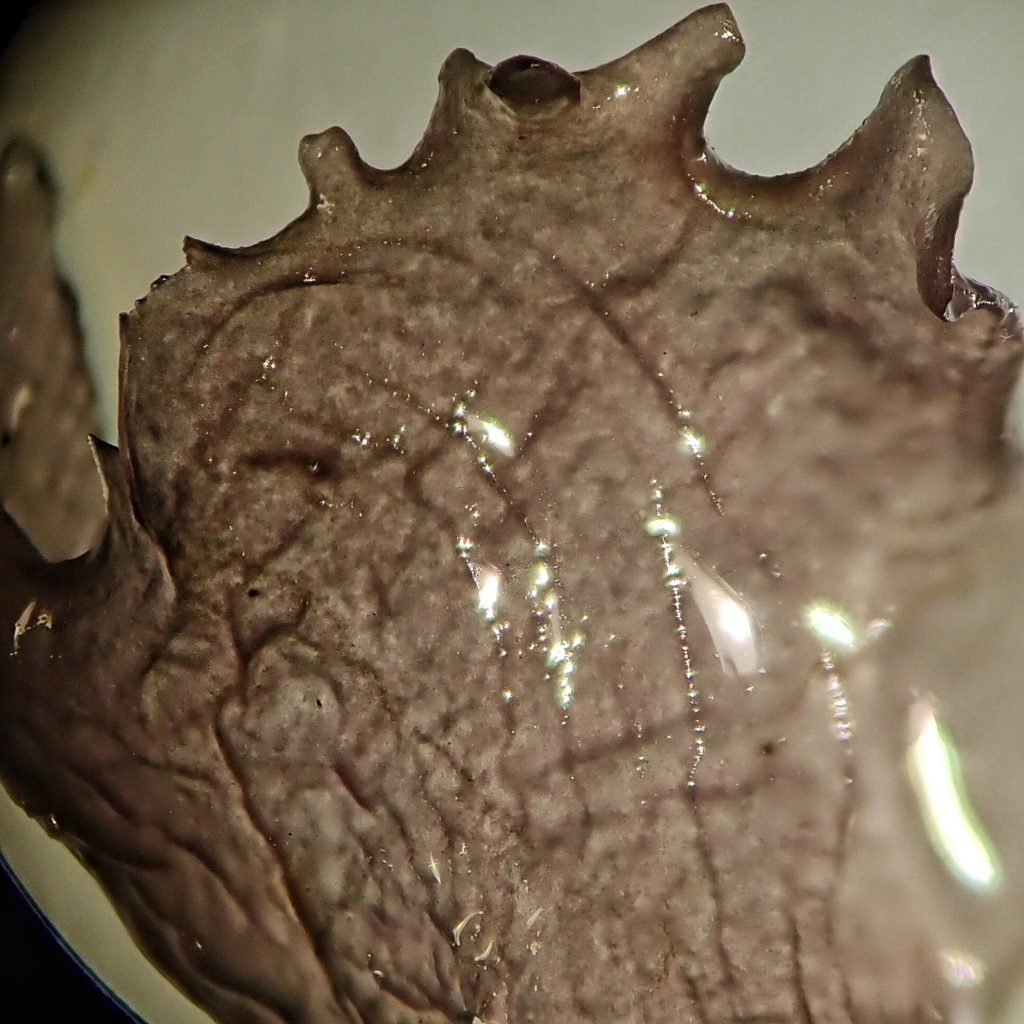
Habitat– On relatively open soil or rock, in road cuts, abandoned roads, revegetating clearcuts; often in conjunction with moss; low to mid elevations
Range– Mostly west of the Cascades, with a disjunct population in n Idaho.
Etymology of names– Scytinium is from the Greek and means ‘having the nature of skin/leather’, which I’m guessing references the look of dry, brown specimens. The epithet palmatum means ‘palm like’ in Latin, and probably refers to the occasional open thallus.
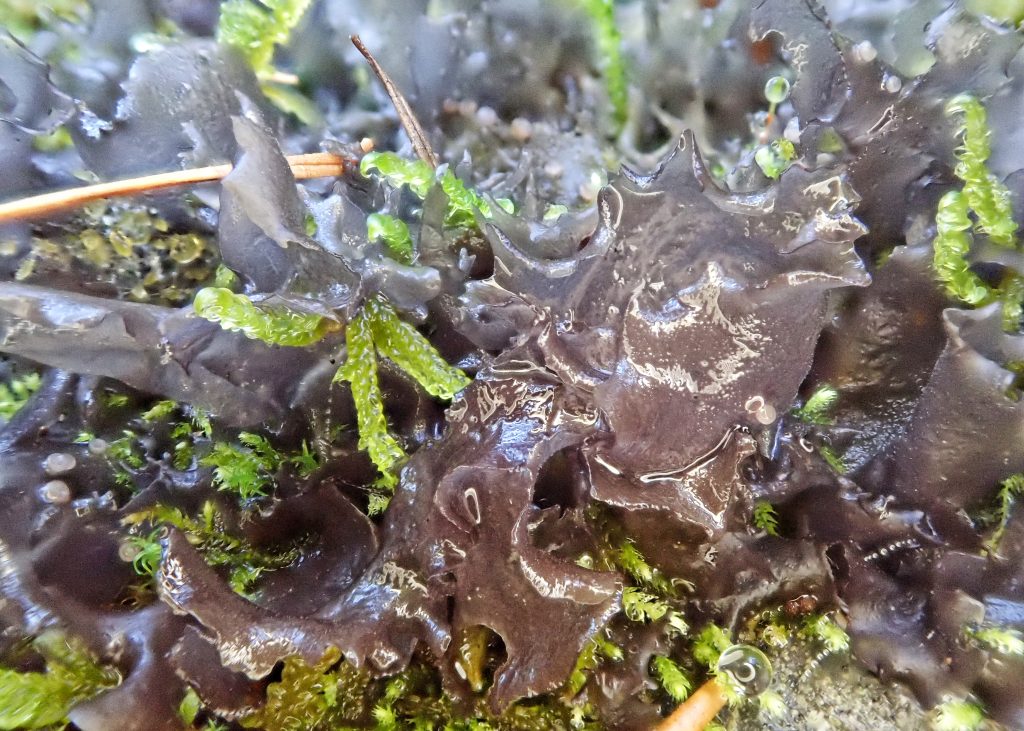
https://lichenportal.org/cnalh/taxa/index.php?taxauthid=1&taxon=125388&clid=1112
http://linnet.geog.ubc.ca/Atlas/Atlas.aspx?sciname=Leptogium+palmatum
https://lichens.twinferntech.net/pnw/species/Scytinium_palmatum.shtml
http://www.lichens.lastdragon.org/Leptogium_palmatum.html
https://www.diva-portal.org/smash/get/diva2:693928/FULLTEXT03
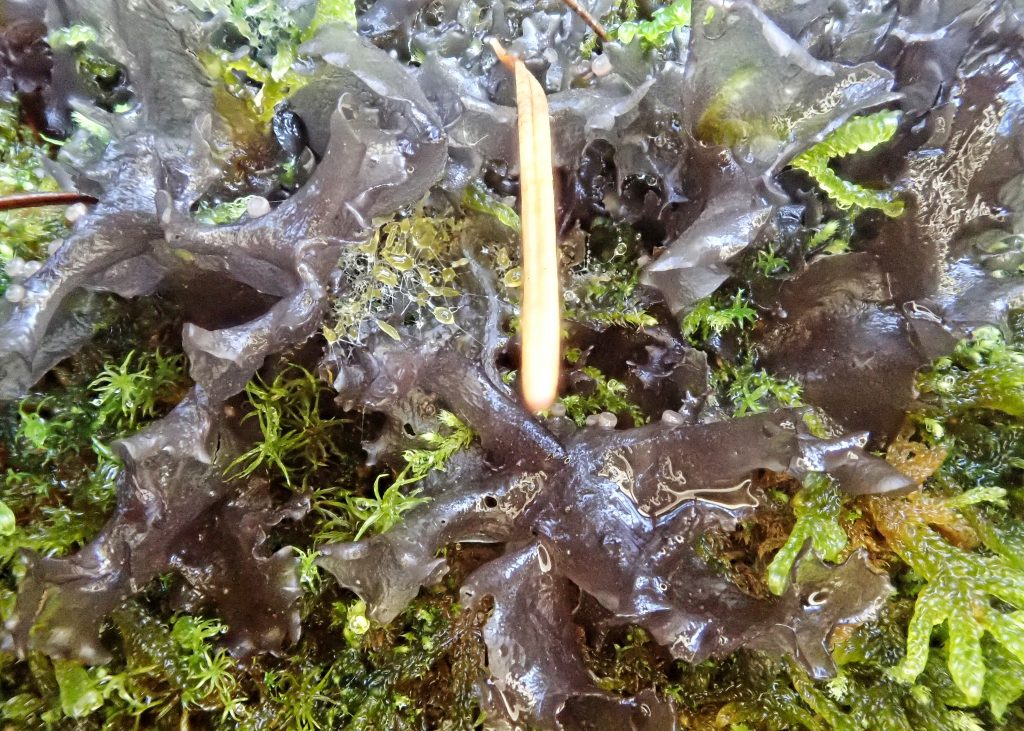
Very cool to see those antlers so clearly!👍
Just found your blog. I really enjoy the fun to read yet very scientifically detailed entries. Also the many references. Thanks!
CJ
Thanks! Really glad to hear you are enjoying it! How did you find it?
I think it was your response to a facebook group that is lichen, moss, fern related.
Thanks for your reply. It always makes me happy when people share my love of these amazing lifeforms!
Dear Dan,
These are marvelous images of the antlered jelly skin lichen! I have a book coming out in 2024 called Moss and Lichen, published by Reaktion Books (London), which specializes in social and cultural history and natural history–they have an Animal series and a Botanical Series. I have included an image of the antlered jellyskin lichen in the book, which is very striking, but so different from yours because the lichen is not hydrated. I point out to readers that mosses can look strikingly different when dry than when wet. And this is true of lichens also, especially the jelly lichens. In any event, I would love to also include your image in the book. What sort of fee might you charge? The business model of Reaktion Books is that authors pay for images that are not available on wikimedia commons or some of the other databases. I am sympathetic to their approach because so few people buy books these days. The print run for Moss and Lichen is 1500 copies. I am a botanist, horticulturalist, and wordsmith by training, but now write “as a naturalist” in retirement (www.elizabethwinpennylawson.com). You have a great blog. Your photography is amazing. You do bugs very well–do you know Andy Murray’s website “chaos of delight”? He specializes in microinvertebrates. If you don’t know it already, take a look! Thank you for considering my query! my best, Elizabeth Lawson
Thank you for your kind words, Elizabeth! I would be honored to have one of my photos in your book, and a copy of that book would be the best payment you could give me! If there are any others you like, feel free to use them as well.
I do know ‘Chaos of Delight’! Great site! I believe I’ve linked to it in some springtail profiles.